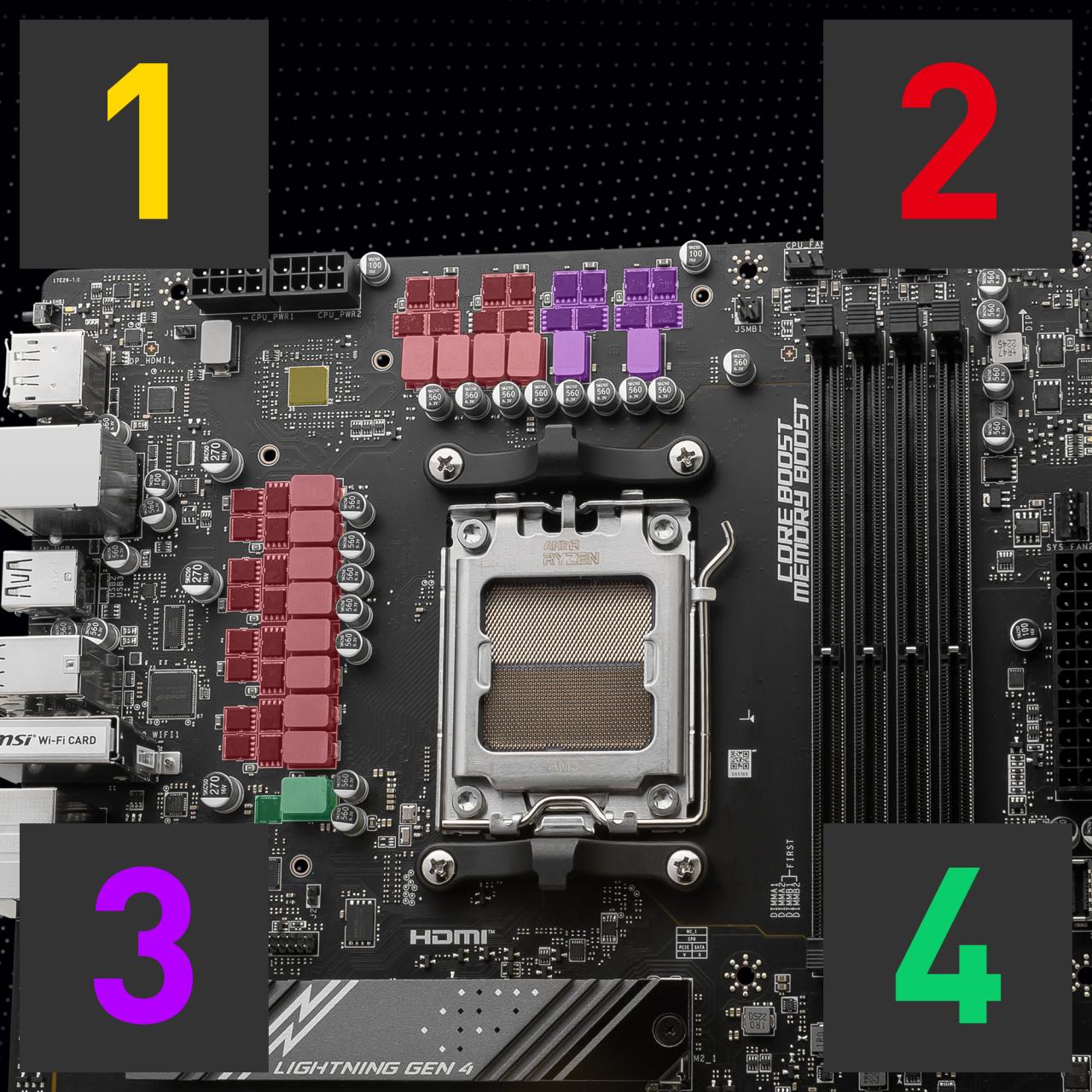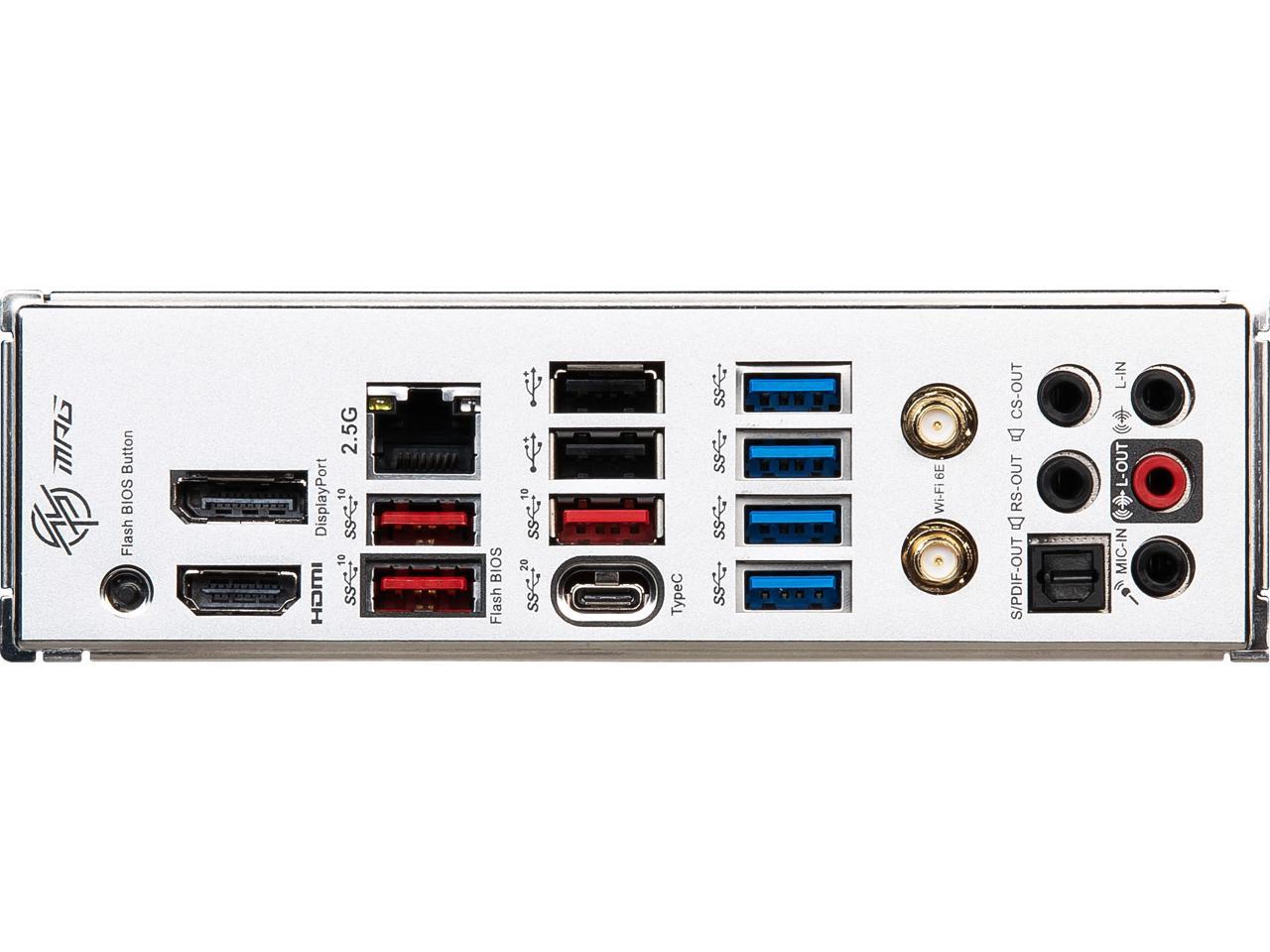MSI B650 Gaming Plus WIFI manual: Unlocking the potential of your new motherboard just got easier! This guide dives into everything you need to know, from initial setup and BIOS navigation to troubleshooting common issues and even overclocking for peak performance. Whether you’re a seasoned PC builder or a first-timer, we’ll walk you through the process step-by-step, ensuring a smooth and successful experience.
So you’ve got your MSI B650 Gaming Plus WiFi motherboard and need the manual? That’s smart! Knowing your hardware is key, especially when building your PC. Check out this helpful resource if you’re a beginner: pc builder for some extra guidance. Then, once you’re comfortable, dive back into that MSI B650 Gaming Plus WiFi manual – it’ll walk you through installing everything properly.
We’ll cover essential topics like installing your CPU, RAM, and other components, configuring BIOS settings, understanding connectivity options (USB, LAN, WIFI), and getting the most out of MSI’s software suite. We’ll also tackle common problems and provide solutions based directly on the manual, making this your one-stop resource for mastering your MSI B650 Gaming Plus WIFI motherboard.
MSI B650 Gaming Plus WIFI Motherboard Overview: Msi B650 Gaming Plus Wifi Manual
The MSI B650 Gaming Plus WIFI motherboard is a mid-range option designed for users seeking a balance of performance and features. This guide provides a comprehensive look at its capabilities and how to effectively use its features.
Key Features and Specifications
The MSI B650 Gaming Plus WIFI boasts features like PCIe 5.0 support for high-speed graphics cards, robust power delivery for CPU overclocking, and integrated Wi-Fi 6E for fast wireless connectivity. It typically includes multiple M.2 slots for NVMe SSDs, ample USB ports (including USB 3.2 Gen 2×2), and support for DDR5 RAM. Compared to similar motherboards like the ASUS ROG Strix B650-A Gaming WiFi or Gigabyte B650 AORUS Elite AX, the MSI board often offers a competitive price-to-performance ratio, though specific feature sets may vary slightly between models.
So you’ve got your MSI B650 Gaming Plus WiFi motherboard and need the manual? It’s packed with info, but sometimes you need a little extra help troubleshooting. For example, if you’re having network issues, checking your internet connection with your provider, like bell mts , might be a good first step. Once you’ve ruled out those external factors, dive back into that MSI B650 Gaming Plus WiFi manual—it’s your best friend for solving those tricky PC problems!
The target audience includes budget-conscious gamers, PC enthusiasts seeking a solid foundation for building a capable system, and general users needing a reliable and feature-rich motherboard.
Manual Navigation and Key Sections
The MSI B650 Gaming Plus WIFI manual is typically organized into sections covering installation, BIOS settings, troubleshooting, and specifications. For first-time users, the crucial sections include the motherboard layout diagram, CPU and RAM installation instructions, and the BIOS/UEFI setup guide. Efficient navigation involves using the table of contents and the index to quickly locate specific information.
BIOS and UEFI Settings, Msi b650 gaming plus wifi manual

The BIOS/UEFI settings allow for customization of various system parameters. Access is typically achieved by pressing the Delete or F2 key during system startup. Key settings include CPU overclocking options (like multiplier and voltage adjustments), XMP profiles for RAM overclocking, boot order configuration, and SATA/M.2 drive settings. Careful adjustments are needed, as incorrect settings can lead to system instability.
| Setting Name | Description | Default Value | Recommended Value |
|---|---|---|---|
| CPU Clock Multiplier | Sets the CPU clock speed. | Auto | Depends on CPU and cooling; start conservatively. |
| CPU Core Voltage | Sets the voltage supplied to the CPU. | Auto | Increase gradually as needed for stability, monitor temperatures closely. |
| DRAM Frequency | Sets the RAM speed. | Default (JEDEC) | XMP Profile 1 (if supported and stable). |
| Boot Order | Specifies the boot device priority. | UEFI Hard Drive | Adjust as needed based on your boot device. |
Troubleshooting Common Issues
Common issues include boot failures, no display, and connectivity problems. Solutions often involve checking cable connections, ensuring proper component installation, updating BIOS/UEFI, and verifying the RAM is correctly seated.
- No POST: Check RAM, CPU, and power supply connections. Update BIOS if necessary.
- No Display: Verify video card and monitor connections. Check BIOS settings for display output.
- System Instability: Check CPU and RAM temperatures. Adjust BIOS settings cautiously if overclocking.
- Wi-Fi Issues: Check router settings and driver installation. Try restarting the router and/or computer.
Hardware Installation and Compatibility
Installing components involves carefully inserting the CPU into the socket, seating the RAM in the designated slots, and connecting storage devices. The motherboard is installed into the PC case after connecting all necessary components. The MSI B650 Gaming Plus WIFI is compatible with AMD Ryzen 5000 and 7000 series CPUs, DDR5 RAM, and various NVMe and SATA storage devices.
Specific compatibility details are found in the motherboard manual and on MSI’s website.
Overclocking and Performance Tuning
The motherboard supports CPU and RAM overclocking, but proceed cautiously. Overclocking involves increasing the clock speed beyond the manufacturer’s specifications, potentially leading to instability or hardware damage if not done correctly. Monitoring temperatures and voltages is crucial. Benefits include improved performance, while risks include system instability and potential hardware damage.
Connectivity and Networking

The motherboard offers various connectivity options, including USB 3.2 Gen 2×2, Gigabit Ethernet, and Wi-Fi 6E. Wi-Fi setup involves installing the necessary drivers and connecting to the network using the operating system’s built-in tools. Wi-Fi 6E generally offers faster speeds and lower latency than older Wi-Fi standards.
Software and Drivers
Necessary software includes the chipset drivers, LAN drivers, and audio drivers. These are usually available on MSI’s website. MSI’s Center software suite allows for system monitoring, fan control, and other system management functions.
Visual Representation of Motherboard Components

The motherboard features a standard ATX form factor. The CPU socket is located near the center, surrounded by the RAM slots. Expansion slots (PCIe and M.2) are positioned along the edge. Numerous USB and audio connectors are located at the rear I/O panel. The layout is well-documented in the manual’s diagrams, showing the precise locations and orientations of each component.
Imagine a rectangular board, with the CPU socket near the middle, RAM slots flanking it, expansion slots at the rear, and the I/O panel with connectors along the back edge. Various headers for case fans, RGB lighting, and other peripherals are found along the edges.
Ending Remarks
Mastering your MSI B650 Gaming Plus WIFI motherboard is now within reach! This guide has equipped you with the knowledge to confidently navigate the manual, install your components, configure BIOS settings, troubleshoot common problems, and even explore overclocking. Remember to always consult the official manual for detailed specifications and safety precautions. Happy building!
General Inquiries
Where can I download the latest drivers for my motherboard?
So you’re diving into the MSI B650 Gaming Plus WiFi manual? Getting your motherboard set up right is key. Remember, setting up network devices can be tricky sometimes, so if you’re also wrestling with a printer, check out this guide for canon ts3420 wifi setup for some helpful tips. Once you’ve got your network humming, you can get back to configuring your MSI motherboard and enjoying your new build!
Visit the MSI website and search for your motherboard model (MSI B650 Gaming Plus WIFI). Their support section will have the latest drivers and software.
My PC won’t boot after installing the motherboard. What should I do?
Double-check all connections: CPU, RAM, power supply, and other components. Ensure the CPU is properly seated and the RAM is in the correct slots. Try reseating the components and booting again. If the problem persists, consult the troubleshooting section of the manual.
What are the best RAM settings for my motherboard?
The optimal RAM settings depend on your specific RAM modules. Consult the specifications of your RAM for recommended timings and voltage. You can experiment with different settings in the BIOS, but be cautious when overclocking.
How do I enable XMP in the BIOS?
The exact steps may vary slightly depending on your BIOS version, but generally, you’ll find the XMP profile option under the “Advanced” or “Ai Tweaker” section. Enable the XMP profile that matches your RAM’s specifications.
